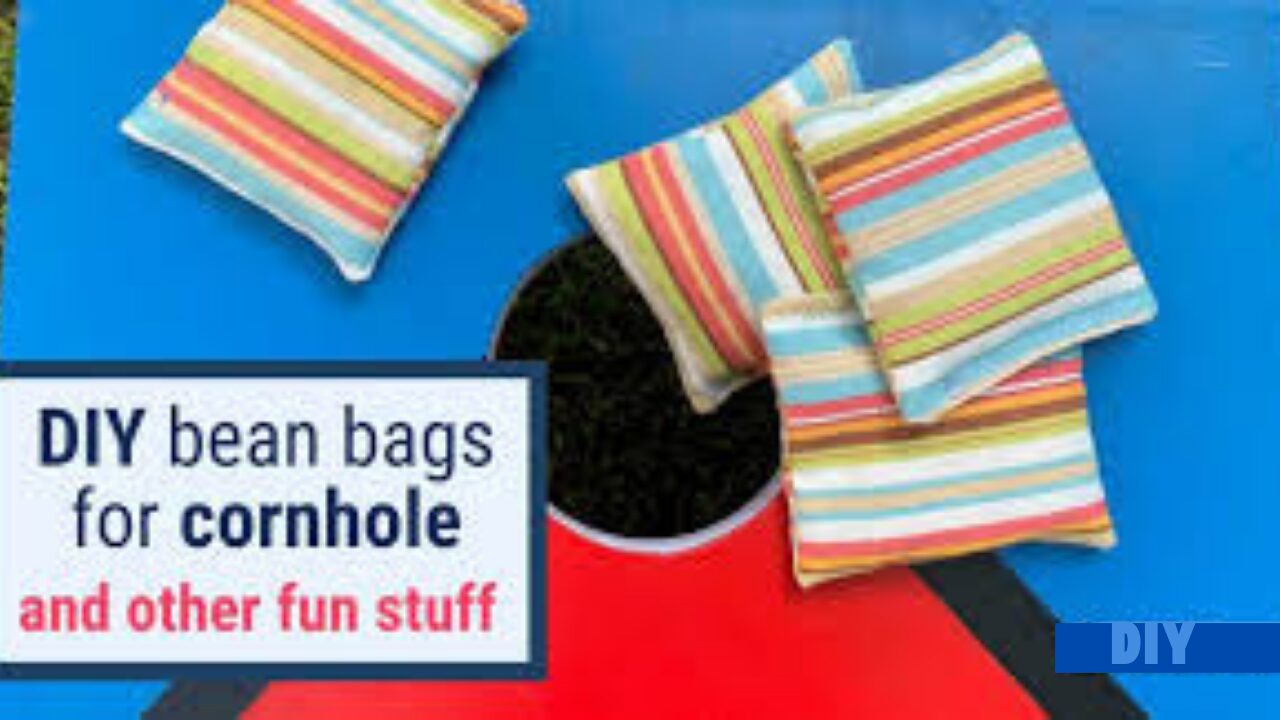
For playing cornholes, a professional-quality beanbags are required. In this guide, our focus is to learn the steps necessary to make such bags. It also includes information on materials used, measurements, and other maintenance assistance.
Cornhole is a well-known game, often played indoors or outdoors in the USA. The other name used to describe this game is a beanbag toss. As, beanbags are the main thing for the play, hence, its quality matters. The cornhole game is very famous, and as a result, beanbags are easily available at stores. Well, it is an easier option to get them ready-made but if you learn the method of making them at home, you will be incredible by seeing the results. Customized beanbags allow you to get them in style and durability.
We’ll discuss the science behind how to make bean bags for cornhole.
In this guide, you’ll have useful advice on choosing materials for sewing and filling and also the entire process of creating regulation-standard beanbags for cornhole. Now let’s get started.

In general, there are several advantages to creating your beanbags. Some of them include:
• The Beanbags we get from stores are often more expensive than the ones we create at home.
• DIY beanbags can be made in a variety of colors, patterns, and other filling materials.
• If properly made with high-quality materials, beanbags can outlast other commercial options.
• It is one of the most satisfying and fun projects for many individuals.
It is essential to gain significant information regarding the official specifications of cornhole beanbags set by an international association called the American Cornhole Association (ACA). Details are as under: –
Size: The finished size of beanbags must be around 6×6 inches.
Weight: Filled beanbags carry the size of approximately 15 and 16 ounces.
Material: For choosing the right material for the beanbags, it is necessary to opt for duck cloth or canvas. Duck cloth is considered as a heavy-duty cotton material, whereas, canvas is also available in numerous colors which is quite often used in making beanbags of own choice.
Filling: Typically, beanbags are filled with dried corn kernels resin, or plastic pellets. The first option offers a soft feel, while, plastic pellets are the modern alternatives that offer durability and weather resistance.
While looking forward to making beanbags, it is necessary to use the right filling materials such as corn kernels which are typically traditional and cost-effective materials. They also provide the capability of absorbing moisture. Another recommended filling material is called a plastic pellet which is weather-resistant and ideally used for outdoor play. For making the beanbags for casual play, you can fill them with dried beans or rice if you are looking for an economic option.
Adhering to regulation standards can help to achieve consistency in regular gameplay. The list of necessary tools is as under:
• For Sewing: For making beanbags, it is ideal to have a sewing machine used for durable stitching, and, a needle or thread if a sewing machine is not available. In the case of hand-sewing, it is recommended to use heavy-duty polyester because it provides durable results.
• For Cutting: Fabric scissors, rotary cutters (optional) and cutting mats should be included in the cutting toolbox in order to fulfill the cutting task.
• For Measurements: Ideally, measuring tape or a ruler serves the purpose of fabric squares and seam allowances. A kitchen scale should also be included in a measuring toolbox in the process of making beanbags.
• For Filling: A funnel is usually required to pour filling materials into beanbags.
• For Marking: Fabric chalk is used to mark cutting lines on the fabric.
• Other: The process of making beanbags is fun, as it allows customized options for you. In your toolbox, there should be all the necessary facilities available. Keep pins or fabric clips with you also that will align the fabric layers while sewing.
• Optional tools: Embroidered sewing machine to add logos, fabric paints for creative patterns, and, a heat press for applying decorative designs onto the beanbags.

1. Fabric Preparation: This step involves cutting the two 7×7-inch squares for each bean bag that also include 0.5 inches seam allowance on all sides. After fabric preparation, choose colors of your own choice for a team play.
2. The next step is to sew all three sides in the following ways:
• Align the fabric in such a way that two squares are placed together with the right-side facing inwards.
• Then in the next step, stitch the fabric’s edges.
• There should be a 2-inch gap for filling, sew only partway on the fourth side.
3. It is recommended to use a zigzag stitch.
4. After stitching, there is an important step comes up, the fillings. By turning the bag inside out, to make the outer sides, fill the bag with available filling material. As described earlier, making the beanbags in good quality also requires the good quality material used inside. Follow the above recommendations while avoid
• For additional durability and even for rough handling of the beanbags for casual and professional play, there is a need to sew each seam twice.
• Weatherproofing is recommended to avoid moisture damage. To accomplish this thing, there is a need to use synthetic fillers like plastic pellets, etc.; a spray used for water resistance is also a useful practice.
By following this guide, you will be able to make your customized beanbags according to your requirements. Making a bean bag is one of the fun projects and customized beanbags are useful either in a casual play or in a professional tournament. Creating your beanbag is economical as compared to getting it from any expensive store.